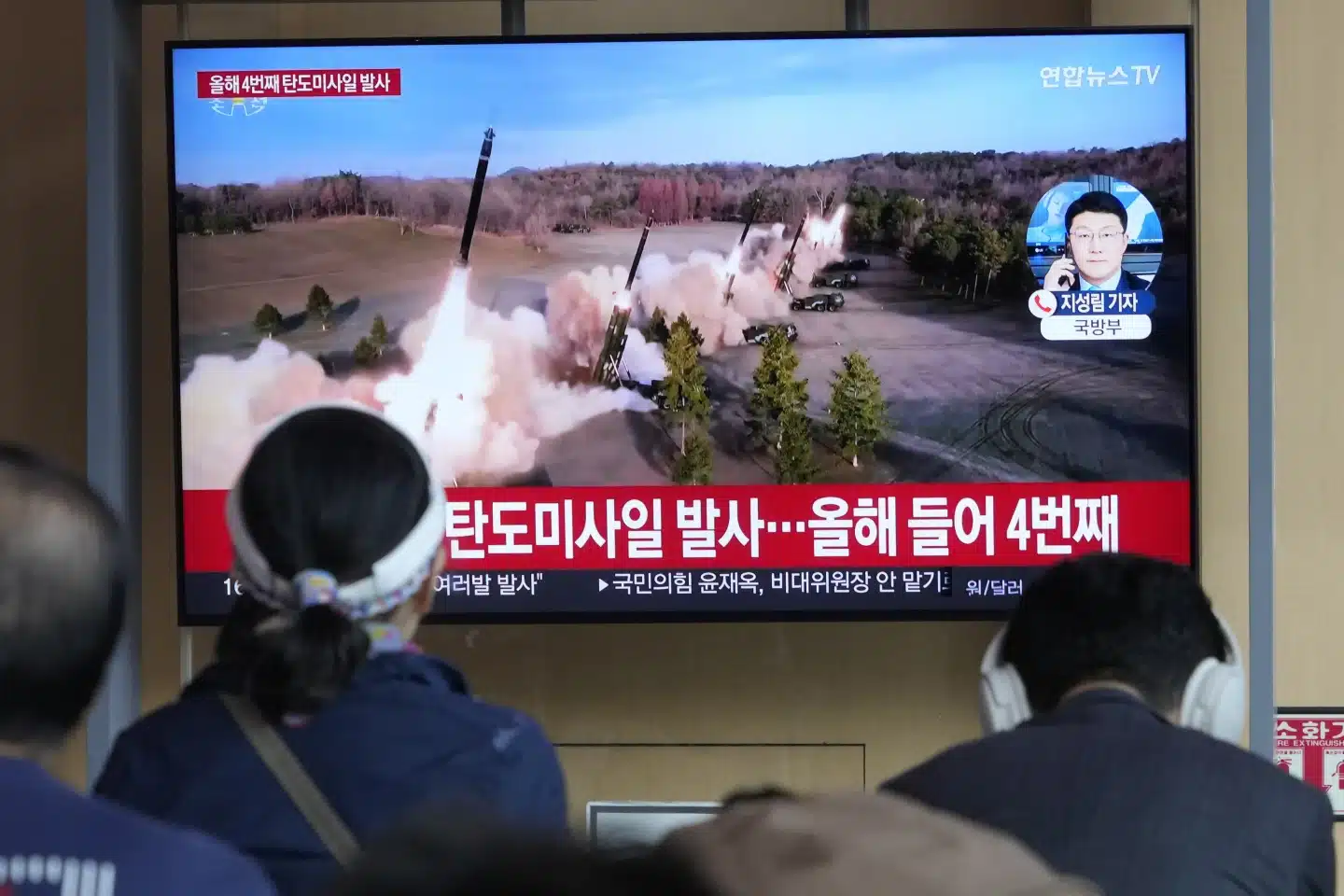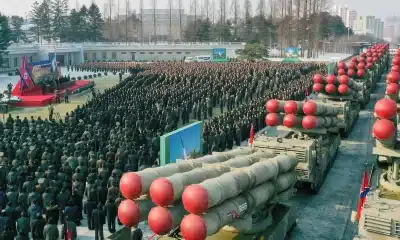News
North Korea Fires Suspected Short-Range Missiles Into The Sea In Its Latest Weapons Test

SEOUL, South Korea — North Korea test-fired suspected short-range ballistic missiles into the sea on Monday, according to its neighbors, as anticipation grew that it might soon send a forbidden satellite into orbit.
According to South Korea’s Joint Chiefs of Staff, the weapons launched from the North’s capital region flew for roughly 300 kilometers (185 miles) before crashing in the waters between the Korean Peninsula and Japan. The ranges indicate that the weapons might target locations in South Korea.
AP – VOR News Image
North Korea Fires Suspected Short-Range Missiles Into The Sea In Its Latest Weapons Test
The Joint Chiefs of Staff sharply criticized the launches, calling them a “clear provocation” that jeopardized peace on the Korean Peninsula. It stated that it will be prepared to “overwhelmingly” respond to North Korean provocations in accordance with its military alliance with the United States.
Yoshimasa Hayashi, Japan’s Chief Cabinet Secretary, told reporters that North Korea launched at least one ballistic missile that flew 250 kilometers (155 miles) at a maximum height of 50 kilometers (30 miles). He claimed that North Korea’s frequent missile testing and other provocative activities endanger the peace and security of Japan, the region, and the international community.
The Japanese coast guard advised ships to exercise caution around falling items, although there were no immediate reports of damage.
North Korea has escalated its weapons testing in recent months as it seeks to improve its military capabilities, while diplomacy with the United States and South Korea has stalled. According to observers, North Korea believes that upgrading its military arsenal will give it leverage to gain larger concessions from the United States if negotiations begin.
AP – VOR News Image
North Korea Fires Suspected Short-Range Missiles Into The Sea In Its Latest Weapons Test
North Korea announced on Saturday that it tested a “super-large” cruise missile warhead and a new anti-aircraft missile in a western coastal area last week. North Korea also tested a solid-fuel intermediate-range missile with hypersonic warhead capabilities in early April, a weapon experts believe is intended to attack remote sites in the United States Pacific island of Guam and elsewhere.
North Korea has already tested nuclear-armed missiles capable of striking targets in South Korea, Japan, and the mainland United States. Many experts believe North Korea already has nuclear missiles capable of reaching all of South Korea and Japan, but it has yet to create operational intercontinental ballistic missiles capable of reaching the continental United States.
In response to North Korea’s growing nuclear threats, the United States and South Korea have increased bilateral military drills and trilateral exercises with Japan. Kim Myung-soo, chairman of South Korea’s Joint Chiefs of Staff, met with U.S. Space Command Commander Stephen N. on Monday to discuss addressing North Korean threats, according to the South Korean military.
Some experts believe North Korea may launch its second spy satellite this month to commemorate a significant milestone, such as the April 15 birthday of its founder, Kim Il Sung, the late grandfather of leader Kim Jong Un, or the April 25 founding anniversary of a predecessor of the North’s military.
Resolutions passed by the United Nations Security Council prohibit North Korea from launching ballistic missiles or satellites. The world body views a satellite launch as a test of its banned ballistic missile technology.
AP – VOR News Image
North Korea Fires Suspected Short-Range Missiles Into The Sea In Its Latest Weapons Test
South Korea’s military said Monday that it had discovered evidence that North Korea is preparing to launch a spy satellite, but there are no indications that it is near.
North Korea sent its first military spy satellite into orbit in November, although its capabilities are widely questioned. In late December, Kim Jong Un announced that North Korea would launch three additional military spy satellites in 2024.
SOURCE – (AP)









































